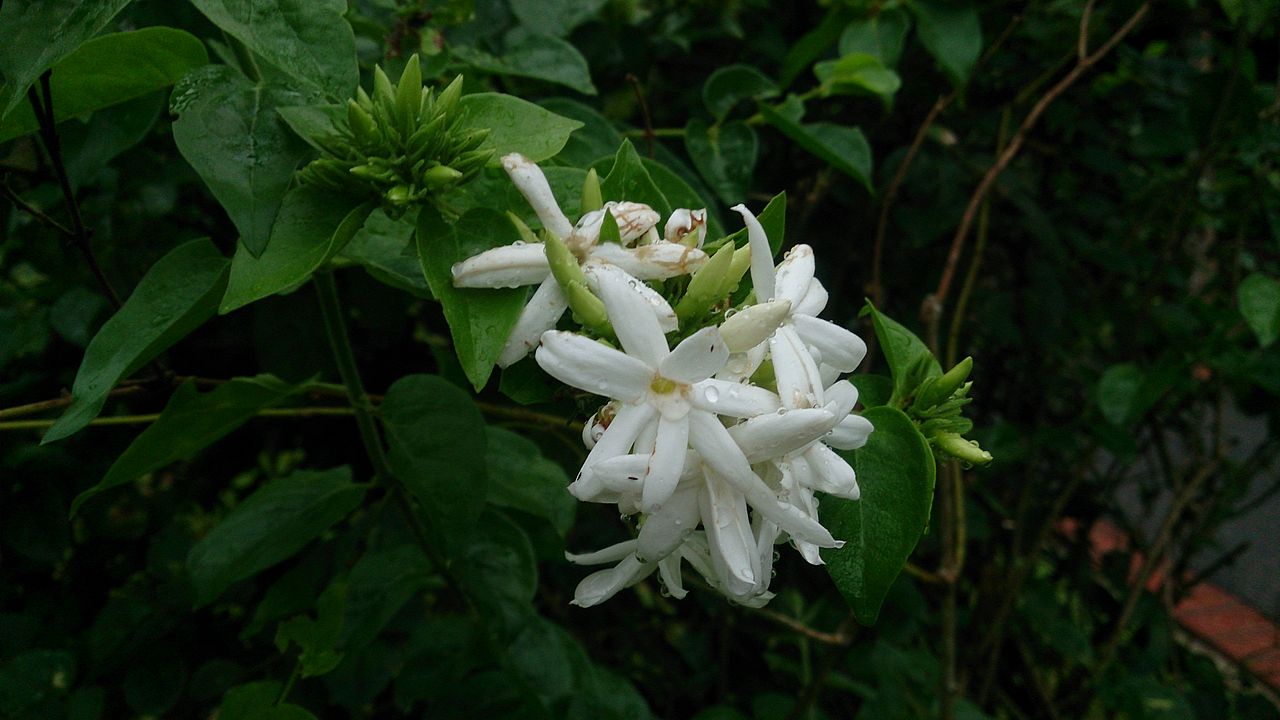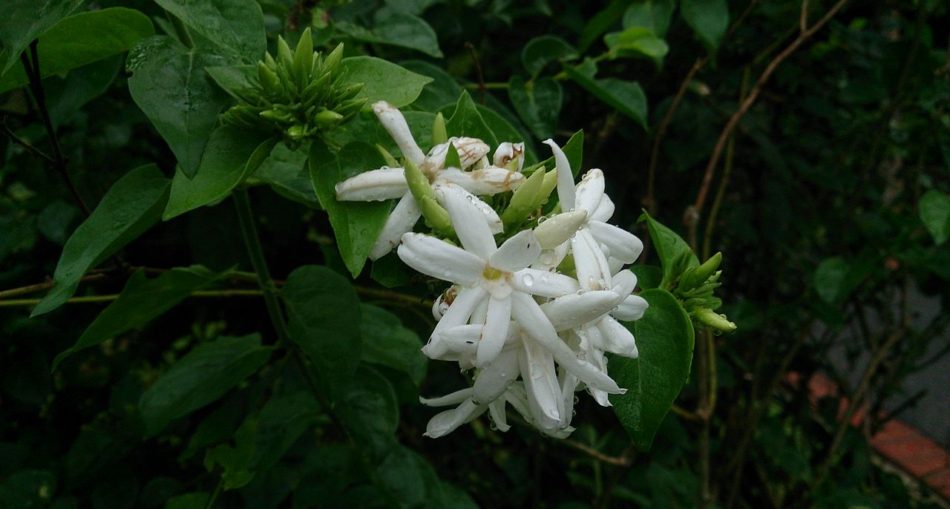As you can probably tell Star Jasmine was named after its peculiar flowers which are shaped like stars. Many Guyanese know this flower as jessamine however, the scientific name of Star Jasmine is Trachelospermum jasminoides. The plant is known by several names including Chinese star jasmine, confederate jasmine, Jessamine, traders compass and southern jasmine. The Jasmine flower represents love, beauty and luck.

Star Jasmine Flowers – Photo By Mokkie – Own work, CC BY-SA 3.0, https://commons.wikimedia.org/w/index.php?curid=31719118
Origin of Star Jasmine
Star Jasmine is native to eastern and southeastern Asia in countries such as Korea and Japan and in southern China and Vietnam. However it grows in Guyana, North American and Europe. Star Jasmine can be grown in a variety of soils. It can handle clayey, acidic, sandy, loamy, and alkaline soil types. Star Jasmine grows in a variety of soil types including clayey, acidic, sandy, loamy, and alkaline.
Scientific Classification of Star Jasmine
- Kingdom: Plantae
- Clade: Tracheophytes
- Clade: Angiosperms
- Clade: Eudicots
- Clade: Asterids
- Order: Gentianales
- Family: Apocynaceae
- Genus: Trachelospermum
- Species: T. jasminoides
Description of Star Jasmine
Star Jasmine is a woody, evergreen climbing shrub that attaches itself to walls rocks and other plants for support. It has glossy leaves, which usually are ovate in shape and opposite each other. The leaves are covered in fine greyish-brown hairs that drop as they mature. This climber has deep green foliage that remains lush green from spring to summer but nearing the of autumn, the colour of these leaves changes to red. However, in Guyana, it remains green all year round due to our climate. The most distinctive feature of the jasmine plant is its flowers. The flowers of the jasmine plant are about one (1) to two (2) cm and typically have five petals. The fragrance of these flowers is calming and heavenly. Star Jasmine fruits are bean-like in shape.
Uses of the Star Jasmine
- Jasmine is an ornamental plant and is used in gardens, parks and public landscapes.
- A Star Jasmine plant an excellent plant for making a hedge, or for covering part of a wall with its beautiful blooms and an exotic scent.
- It can also be used in a pot with smaller plants, on terraces and patios. or for groundcover under tall trees.
- Perfume is made from the prized oil extracted from the steam distilled or tinctured Jasmine flowers
- In a dilute form, tinctured flowers are much used in Chinese, Vietnamese and Thai incense.
- The fragrant white flowers are sacred to Lord Vishnu in the Hindi religion and is an essential part of the marriage ceremonies and the flowers are used as garlands in the ceremony.
- From the stems of this plant, a bast fibre is produced.
- In medicinal use, Jasmine is useful for the elderly as the flowering stem is analgesic, antibacterial, antirheumatic, antispasmodic, depurative, emmenagogue, febrifuge, resolvent, tonic and vasodilator
- A decoction is used in the treatment of sore throats, rheumatoid arthritis, and various boils and abscesses while the leaves are restorative and tonic.
- The seed is cardiotonic and haemostatic.
Interesting Tip
- The word ‘jasmine’ comes from the old Persian “yasamin” or Yasmin, which means ‘gift from God’.
- To ensure that the plant remains a shrub, trimming is advised.
- Star jasmine is not true jasmine but was named so because of the star-shaped, white flowers of this species resembles to the true jasmine flowers.
Star Jasmine plants have lots of uses. They are widely used in Chinese medicine and treats sore throats, rheumatoid arthritis, and various boils. While Star Jasmine plants are not considered true jasmine, they are still a beautiful addition to any homes or yardspace. Instead of building fences, these plants can be trimmed into beautiful, fragrant hedges.
Article References
- https://en.wikipedia.org/wiki/Trachelospermum_jasminoides
- http://guyanachronicle.com/2012/03/10/in-the-green-corner-44
- https://www.rhs.org.uk/plants/18287/Trachelospermum-jasminoides/Details
- https://pfaf.org/user/Plant.aspx?LatinName=Trachelospermum+jasminoides
- https://elmaskincare.com/herbs/herbs_star_jasmine.htm







